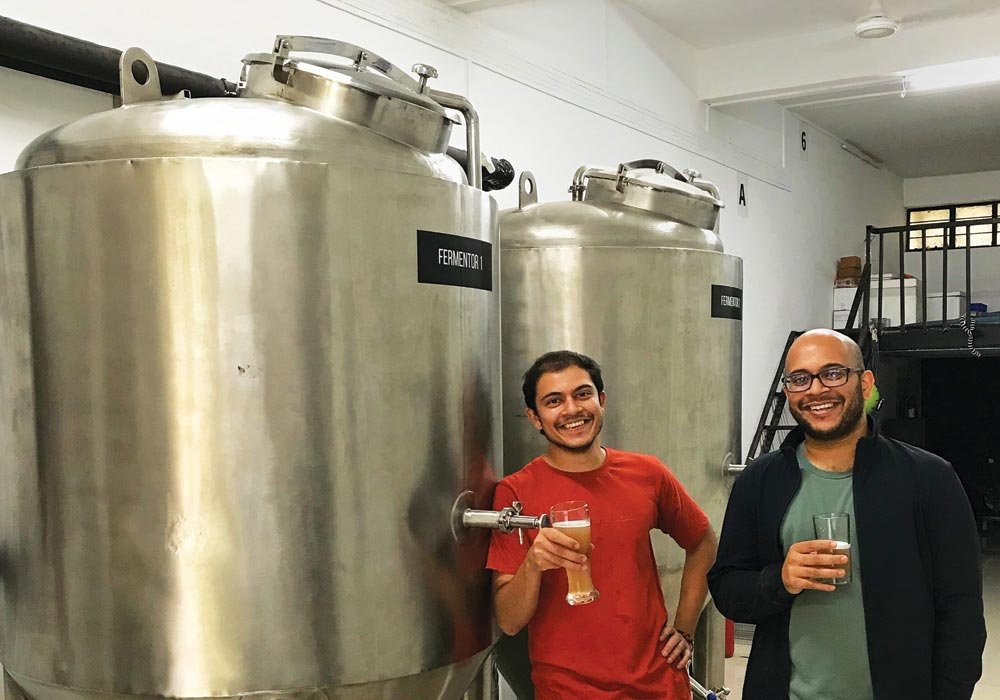Pacesetting your Brewery

Recreating the same batch of beer may not be a piece of cake but is certainly not impossible to achieve too. We as brewers use the same ingredients, try to hit the same gravities, volumes, pH, temperatures as last time. We take efforts to ensure that that we consistently churn out the same beer every time. Plus, there are efforts involved to ensure that the batch of beer that goes in the fermentor doesn’t get infected. When it comes to sanitation, one can never be too careful.
Even so, there are times when we do miss the targets, when the beer gets infected, or something doesn’t turn out as we wanted it to. And we’re hardly warned before they happen. We have our own set of procedures that we follow, but there are certain small additional formulas or tests that you can perform.
You can perform these tests in a fraction of the time required to brew an entire batch. Think of it this way, these tests will make sure that you are one step ahead in case something goes wrong. Plus, these tests are inexpensive, easy and quick to perform and you do not need any extra apparatus than you already have.
Missed gravity/volume
The concept of total gravity will come to your rescue if you miss your target gravity (or target volume). Total gravity is the product of the volume of wort and its gravity. For example, if you have 20 litres of wort of gravity 1.046, the total gravity would be:
Volume x Gravity = Total Gravity
20 x 46 = 920 GUs (Gravity Units)
This total gravity is not going to change even when you boil off or dilute your wort. The only way it can change is if you add any type of sugar to the wort. Now when you know your total gravity, you can make changes on the fly. Let’s take an example. You have a pre-boil volume of 900 litres of pre-boil gravity 1.052. You need to boil the wort till it reaches a gravity of 1.058. Till what volume should you boil the wort so that it reaches the required gravity?
Since total gravity will always be the same, the pre-boil gravity units should be equal to the post-boil gravity units.
Pre-boil volume initial x Pre-boil gravity initial = Post-boil volume required x post-boil gravity required.
900 x 52 = Post-boil volume required x 58
Hence,
Post-boil volume required = (900 x 52)/58= 807 litres
Therefore, you need to boil the wort till it reaches a volume of 807 litres so that the gravity will be 1.058. As you can see, you can use the same formula to calculate gravity too.
Forced Wort Test
(or Wort Stability Test)
The forced wort test (or wort stability test) is conducted to check whether the hot side of the brewing process is clean and sanitary. It shows whether the wort is stable and free from contamination. A small amount of wort is collected in a sterilized flask before pitching yeast. The wort is then incubated for a few days and then checked for contamination.
Apparatus and Materials:
- Sterile flask
- Incubator or a warm location
Procedure:
1. Take a wort sample from the fermentor aseptically in a sterile flask prior to pitching yeast.
2. Place in an incubator at 30°C or in a warm location for 3 days.
3. Inspect the sample for any signs of contamination (haze, bubbles, odour, etc.). Use the table below to check what to do if there is a contamination.
Results:
Duration: 1 Day
Conclusion
Dump the beer. Clean your heat exchanger and hoses.
Duration: 2-3 days
Conclusion
Good chance the beer will be affected.
Duration: 3-6 days
Conclusion
Beer may or may not be affected.
Mild contamination present.
Duration: 7 days or more
Conclusion
Very clean. Maintain current sanitary practices.
Additional Test:
As a way to overcome false positives, take 2 samples in 2 different sterile flasks. If the wort in only one of the flasks looks contaminated, then the problem can be narrowed down to physical hygiene or un-sanitary flasks. If both flasks are clean/dirty, the above results apply.
Another test you can conduct is to take multiple samples along the way. One from the kettle, one after the heat exchanger, etc. It will be easier to narrow down on the source of contamination in case there is one.
Forced Ferment Test
(or Forced Attenuation Test)
The forced ferment test (or forced attenuation test) is conducted to check the maximum attenuation for the wort and yeast combination. After cooling down the wort and transferring to the fermentor, take a sample in a sterile flask. Add an excessive amount of the same strain of yeast that will be used to ferment the main batch. Note that the sample size should be big enough to take a gravity reading later using a hydrometer. With constant stirring and a higher temperature, the fermentation in the sterile flask is forced to go to its maximum attenuation. This is also called as the limit of attenuation, and the finishing gravity (FG) of the main batch will be slightly higher (by 1 or 2 specific gravity points) than the forced ferment batch.
The FG of the fast ferment batch will be reached faster than the main batch. This can help make decision about the main fermentation, its progress and to diagnose any problems with over-or under-pitching.
Apparatus and Materials:
- Sterile flask
- Incubator or a warm location
- Stir plate or shaker table
Procedure:
1. Collect a wort sample (approximately 250ml) in a sterile flask aseptically from the fermentor before pitching.
2. Place the flask on a stir plate at a higher temperature (at or above 25°C).
3. Take a gravity reading using a hydrometer after all activity stops.
Results:
Main Batch Final Gravity: Higher by more than 3 gravity points
Conclusion
FG still not reached. Rouse the yeast to restart activity or pitch more yeast.
Check yeast health.
Main Batch Final Gravity:
Higher by 0 to 3 gravity points
Conclusion
FG reached. Beer ready.
Main Batch Final Gravity: Lower
Conclusion
Contamination by wild yeast or bacteria.
This article is contributed by PARTHA MEHANDALE, Owner, Yavasura



